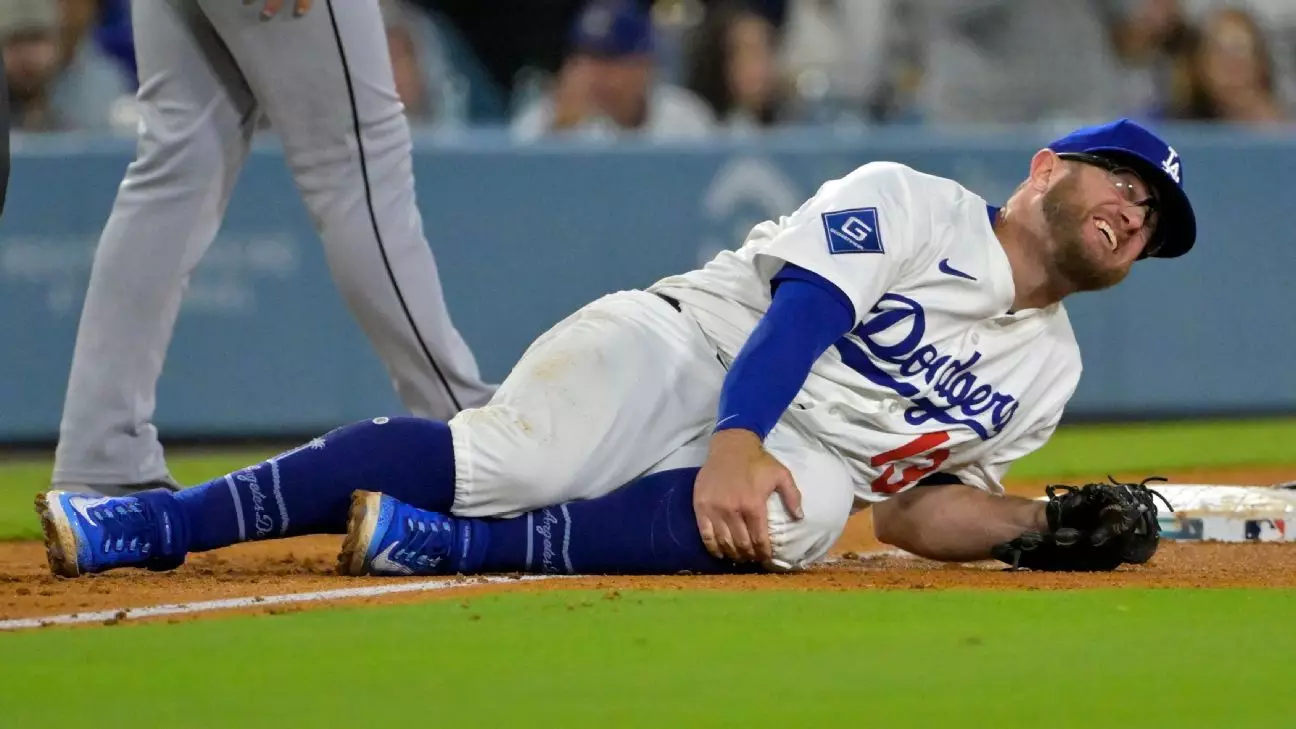In the high-stakes world of professional baseball, injuries are more than just physical setbacks—they strike deeply into the athlete’s psyche. Max Muncy’s recent ordeal offers a stark reminder of how fleeting moments on the field can dramatically alter a player’s trajectory. When Muncy collided with Michael A. Taylor, the immediate concern spread beyond the physical pain to the anxiety about missing valuable game time. The relief that accompanied the MRI results underscores how fragile athletes’ hopes are when faced with injury. It also reveals a vital truth: mental resilience becomes paramount when the body is compromised. Only a player with a strong mental backbone can endure the emotional rollercoaster—accepting setbacks but refusing to let them define their career.
The shock of realizing an injury is not as severe as initially feared is profound. However, that relief is sharply juxtaposed with the harsh reality of a six-week absence. Such periods can be devastating in a sport driven by momentum, rhythm, and consistency. The weight of anticipation, frustration, and disappointment looms large. These moments serve as a crucible, either forging stronger mental resilience or igniting despair. For Muncy, his words reflect genuine gratitude mingled with an unyielding resolve not to let this temporary setback derail his aspirations. His experience is a wake-up call for athletes everywhere—preparing ourselves mentally is as crucial as physical conditioning.
The Brutality of Play and Its Unexpected Consequences
The incident that led to Muncy’s injury illuminates the unpredictable nature of baseball—a sport where split-second decisions and reactions can lead to unforeseen injuries. The collision with Taylor, a play that seemed routine, turned into a harsh lesson in the sport’s brutality. It underscores how even well-rehearsed plays can turn tragic within seconds, emphasizing the physical risks players accept every time they step onto the field.
Taylor’s injury, while less severe, reminds us that sports injuries rarely involve just one participant. The collateral impact, both physically and psychologically, affects not only the injured player but their peers as well. It reminds teams and fans alike that athletes are vulnerable living beings, whose well-being must be prioritized over the game’s outcome. The fact that Taylor was able to sideline himself and recover signals resilience, yet the injury’s randomness reminds us why safety protocols and careful play are critical.
Moreover, the energy of the game persists, even when injuries occur. Clayton Kershaw’s milestone moment—the 3,000th strikeout—continued despite the interruptions, symbolizing the relentless pursuit of excellence amidst chaos. These juxtaposed moments reveal how the sport embodies a paradox: beauty and danger, progress and setbacks. Athletes and fans are constantly balancing admiration for skill with awareness of the inherent risks involved.
The Broader Impact on the Team and Strategy
From a strategic standpoint, injuries of this nature force teams into rapid adjustments, testing their depth and resilience. Muncy’s absence means shifts in the lineup, prompting decisions that could influence the team’s performance over weeks. The Dodgers’ rapid call-up of Esteury Ruiz signals their preparedness to adapt, highlighting how modern teams cultivate versatile rosters capable of handling adversity.
Manager Dave Roberts’s response—choosing not to view the gruesome replay—speaks to a mindful approach to managing team morale and individual mental health. It raises questions about how much the emotional well-being of players is prioritized in a high-pressure environment. The decision to bring in Enrique Hernandez or to work with utility players like Tommy Edman points to a broader understanding: that team success hinges on flexibility, mental toughness, and strategic foresight.
Injuries also prompt conversations about preventative measures and athlete longevity. Modern training regimes, injury management protocols, and medical advancements continually evolve, but the unpredictable nature of sports means injuries are never fully eradicated. Muncy’s case underscores the importance of resilience—not just in the face of injury but in injury prevention, mental fortitude, and team dynamics.
Redefining Resilience in the Age of Instant Gratification
In an era obsessed with instant results and viral moments, genuine resilience is arguably undervalued. Muncy’s experience sheds light on a different kind of strength—a gritty determination to bounce back from adversity without losing perspective. That brief moment of heartbreak when he heard the crowd roar after missing Kershaw’s milestone reveals a raw authenticity that fans often overlook in their obsession with highlight reels.
Resilience does not mean merely bouncing back; it involves adapting, maintaining focus, and harnessing inner strength to navigate the unpredictable landscape of professional sports. Muncy’s acknowledgment of the six-week recovery reflects an understanding that setbacks are inevitable, but how athletes respond defines their character. In a broader sense, this resilience should be a lesson for everyone—whether in sports, careers, or personal endeavors—that setbacks do not diminish one’s potential if approached with grit and perseverance.
Ultimately, the narrative surrounding injuries is often muddled with frustration and disappointment. However, true strength lies in the ability to view adversity as an opportunity for growth. Muncy’s cautious optimism and his commitment to returning stronger embody the essence of resilience—an invaluable trait that transcends sport and resonates with life’s broader challenges.


Leave a Reply